Augmented reality (AR) is a promising new technology with the potential to revolutionize collaborative design and learning. It can also be used to give individualized feedback as a person is moving around without completely eliminating the surrounding visual cues (e.g. virtual reality). Students and researchers can explore these questions at the Immersion Lab with AR-capable head-mounted displays.
Virtual reality (VR) is a computer-generated simulation of a three-dimensional image or environment that can be interacted with in a seemingly real or physical way by a person using special electronic equipment. The MIT.nano Immersion Lab offers access to a range of tools to assist with projects using virtual reality.
Microsoft HoloLens 2
The HoloLens 2 is an untethered mixed reality device with apps and solutions that enhance collaboration. Read text and see intricate details on 3D images. Touch, grasp, and move holograms in ways that feel natural—they respond a lot like real objects. Move freely, with no wires or external packs. The HoloLens 2 headset is a self-contained computer with Wi-Fi connectivity. Read more from Microsoft.
Varjo XR-4 Headset
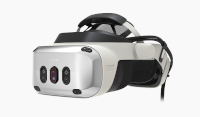 The Varjo XR-4 is a professional mixed reality headset supporting XR, AR, and VR with dual 4K × 4K mini-LED displays, a 120° x 105° field of view, and 90 Hz refresh rate. It features inside-out 6DoF tracking, integrated eye (200 Hz) and hand tracking, low-latency dual 20 MP video pass-through, and LiDAR-based depth sensing. Read more at Varjo.
The Varjo XR-4 is a professional mixed reality headset supporting XR, AR, and VR with dual 4K × 4K mini-LED displays, a 120° x 105° field of view, and 90 Hz refresh rate. It features inside-out 6DoF tracking, integrated eye (200 Hz) and hand tracking, low-latency dual 20 MP video pass-through, and LiDAR-based depth sensing. Read more at Varjo.
Varjo XR-3 Headset
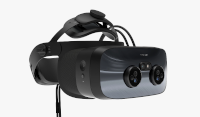 The mixed reality Varjo XR-3 headset allows you to switch between XR, AR, and VR in a single headset. Inside-out tracking allows deployment without requiring base stations. Hand tracking and eye tracking are integrated. The XR-3 offers low-latency, 12-megapixel video pass-through technology and depth awareness powered by LiDAR. Read more at Varjo.
The mixed reality Varjo XR-3 headset allows you to switch between XR, AR, and VR in a single headset. Inside-out tracking allows deployment without requiring base stations. Hand tracking and eye tracking are integrated. The XR-3 offers low-latency, 12-megapixel video pass-through technology and depth awareness powered by LiDAR. Read more at Varjo.
Meta Quest Pro Headset
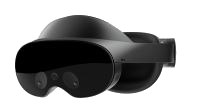 The Quest Pro is designed for VR and MR with high resolution passthrough and self-tracking hand controllers that provide haptic feedback. It features a slimmer optical stack than the Quest 2 headset and counterbalanced design for improved ergonomics. Hardware includes 10 VR/MR sensors, spatial audio, 256GB storage, 12GB RAM, and Snapdragon XR2+ processor. Read more at Meta.
The Quest Pro is designed for VR and MR with high resolution passthrough and self-tracking hand controllers that provide haptic feedback. It features a slimmer optical stack than the Quest 2 headset and counterbalanced design for improved ergonomics. Hardware includes 10 VR/MR sensors, spatial audio, 256GB storage, 12GB RAM, and Snapdragon XR2+ processor. Read more at Meta.
Meta Quest 3 Headset
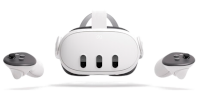
The Quest 3 is a successor to the Quest 2 virtual reality headset, with a thinner optic profile, additional sensors, and color passthrough cameras for VR and MR. The redesigned hand controllers provide haptic feedback and direct touch hand tracking. The Quest 3 is backwards compatible with Quest 2 software. Read more at Meta.
HP Reverb G2 Omnicept Headset
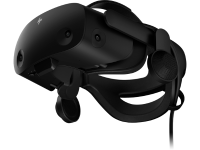
The Reverb G2 Omnicept combines immersive VR experiences with integrated sensor systems to measure muscle movement, gaze, pupil size and pulse and capture user responses in real time. Four cameras are built into the headset and no external sensors are required for tracking movement. The Reverb G2 Omnicept displays a resolution of 2160x2160 per eye and utilizes foveated rendering. Read more from HP. (HP Reverb G2 Omnicept headsets are being phased out; please contact staff for availability.)
HTC Vive Pro Eye Headsets
The Vive Pro Eye allows users to track and analyze eye movement, attention, and focus, with the goal to create more immersive virtual situations, as well as gain insights about user performance and interaction. Read more from VIVE Enterprise.
The Vive Pro Eye utilizes external base stations for roomscale tracking. The headset must be tethered to a computer, but may be paired with a backpack computer for free-roam experiences. Vive Pro Eye headsets in the Immersion Lab can be integrated into the Optitrack motion tracking system. (HTC Vive Pro Eye headsets are being phased out; please contact staff for availability.)
Oculus Go, Oculus Quest & Oculus Quest 2 Headsets
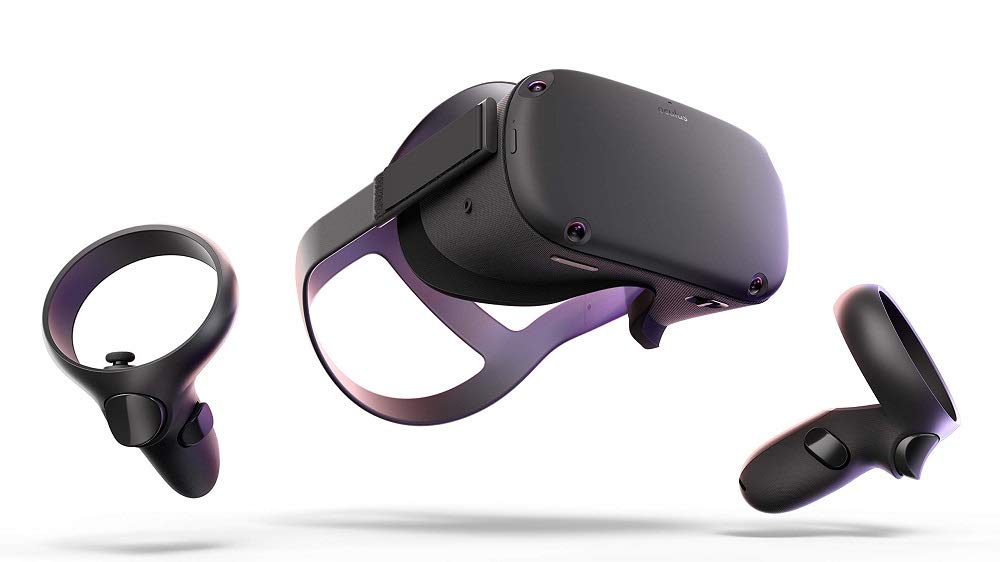 The Oculus Go, Quest, and Quest 2 offer untethered wireless virtual reality experiences. The Quest and Quest 2 feature inside-out tracking and support 6DOF and roomscale simulations. The Go is suitable for stationary immersive experiences only. All our Oculus headsets may be checked out for use outside the 12-3207 labspace. (Go and Quest headsets are phased out; please contact staff for availability.) Read more at Oculus.
The Oculus Go, Quest, and Quest 2 offer untethered wireless virtual reality experiences. The Quest and Quest 2 feature inside-out tracking and support 6DOF and roomscale simulations. The Go is suitable for stationary immersive experiences only. All our Oculus headsets may be checked out for use outside the 12-3207 labspace. (Go and Quest headsets are phased out; please contact staff for availability.) Read more at Oculus.
HP G2 Backpack Computers

The HP G2 backpack enables free-roam experiences with optimized cable management for increased range of motion. This backpack can be connected to the Vive Pro Eye or Oculus Quest. Batteries can be hot-swapped for continuous use. Read more at HP.
